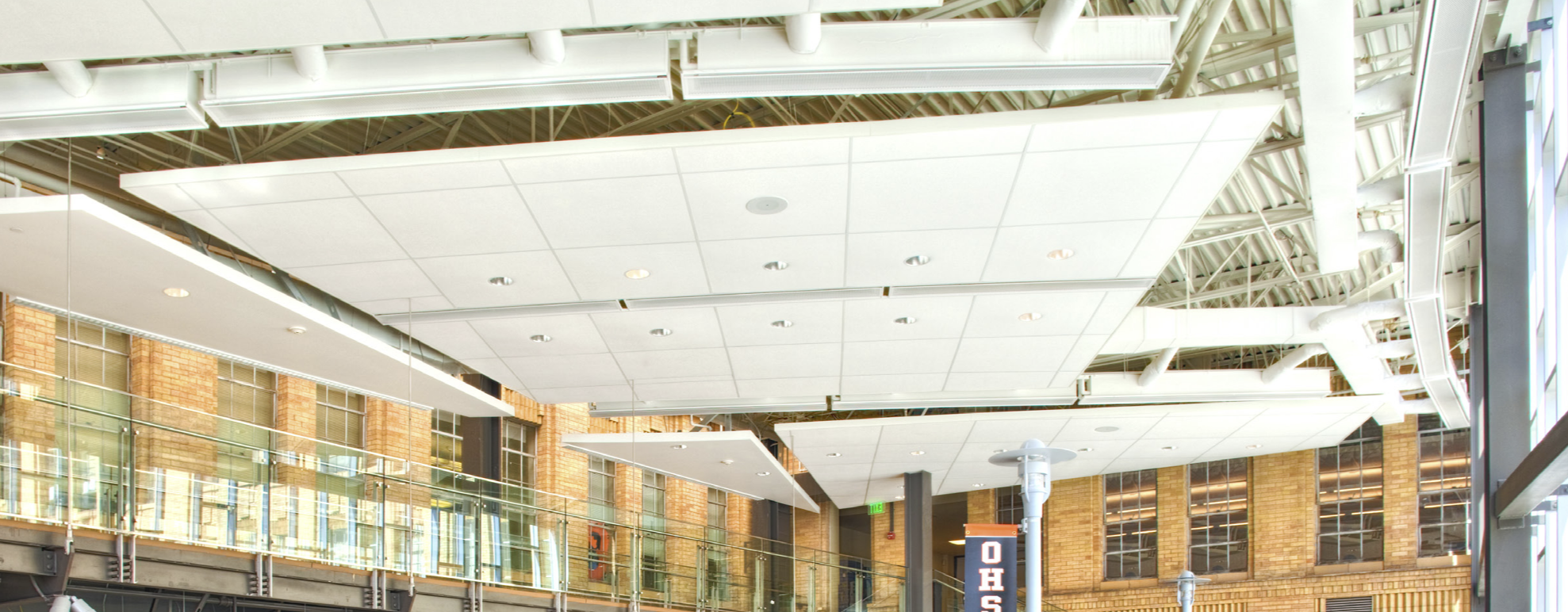4 Ways Chilled Beam Technology Impacts Building Efficiency

Chilled beam technology is one of the most used HVAC systems in Europe. The first radiant ceiling was installed in Sweden in the late 1960s and the predecessor to today’s passive chilled beams were first installed in Stockholm, Sweden in 1986. It has only been in the last decade that technology is catching on in the United States. But, why?
After all, in the US we have access to some of the most innovative equipment technology in the world. What benefits do chilled beams offer that could persuade engineering teams designing hospitals, universities, and office buildings to use this seemingly simple technology to heat and cool indoor spaces?
How do chilled beams work?
There are two types of chilled beams:
- Passive: Passive chilled beams have no supply air inlet, contain a heat exchanger, and are usually mounted below the ceiling. Chilled water passes through the tubes as warm air from the space rises toward the ceiling and the chilled beam cooling coil. The cooled air then falls into the space, becomes heated, and then returns toward the ceiling.
- Active: Active chilled beams have a supply air inlet, contain a heat exchanger, and are mounted flush with the ceiling. The supply air inlet provides conditioned ventilation air which is pushed through nozzles where it mixes with air being pushed up through the cooling cools. Active chilled beams can be used for both heating and cooling and are more commonly used than passive chilled beams.
Chilled beams are well suited for applications like classrooms, office buildings, health care, and other uses where the sensible heat ratios are reasonably high. They would not be suitable for any application with higher latent loads like bathrooms, kitchens, and pools, or spaces that have operable windows where the beams could be exposed to outdoor air with higher levels of humidity.
How do chilled beams impact building efficiency?
We’ll look at a couple of different angles in building efficiency: money savings and energy savings.
- Installation costs: Costs are generally lower from the beginning. Duct sizing can generally be reduced by 50% or more. Using water to handle the space load is more efficient given the heat transfer properties of water. For example, a 1-inch pipe with water transports the same heating and cooling capacity as 16x16 inch ductwork. Additionally, a smaller air handling unit can be used, reducing both space footprint and initial cost.
- Maintenance: Chilled beams require very little maintenance and repair. There is no filtration required and no blowers or motors involved. They require cleaning and that’s about it, making maintenance costs for chilled beams minimal at best. (Editor’s note: Always follow the manufacturer’s recommended guidelines for maintenance for every piece of equipment in your building.)
- Energy costs: Chilled beams use warmer supply and air temperatures as opposed to more traditional HVAC systems. For chilling, supply air needs to be 61-66°F as opposed to 50-55°F in conventional systems. For the heat exchanger, cold water input would need to be warmer at 55-64°F versus 40-45°F and hot water would need to be 100-140°F as opposed to 140-180° This reduces the overall energy usage in the building, reducing overall energy costs. Price Industries estimates that active and passive beam systems can save 30-57% of energy costs, depending on the application.
- Space: Because chilled beams are installed either in the ceiling or suspended just below the ceiling, no floor space is required for these systems. Usable space in commercial building can equate to both money and energy savings.
For a comprehensive application guide on chilled beams, please visit the Price Industries Application Guide. You’ll find information about chilled beam systems vs. VAV and VRF systems, pumping energy required, benefits of using chilled beams, and general information about system design. Additionally, you may want to check out Taking Flexibility with Chilled Beams to the Next Level. It’s a quick read about chilled beam layout from Price.
There are many reasons and applications to use chilled beams to cool and heat spaces. If you need more information about chilled beams and how they could be used in your application, please connect with one of our sales engineers.
// about the author
 Kelly Patterson
Kelly Patterson
Kelly Patterson is a lifelong learner and the marketing director at the Hoffman family of companies. There is nothing she likes more than talking about commercial HVAC systems and extraordinary customer service.












